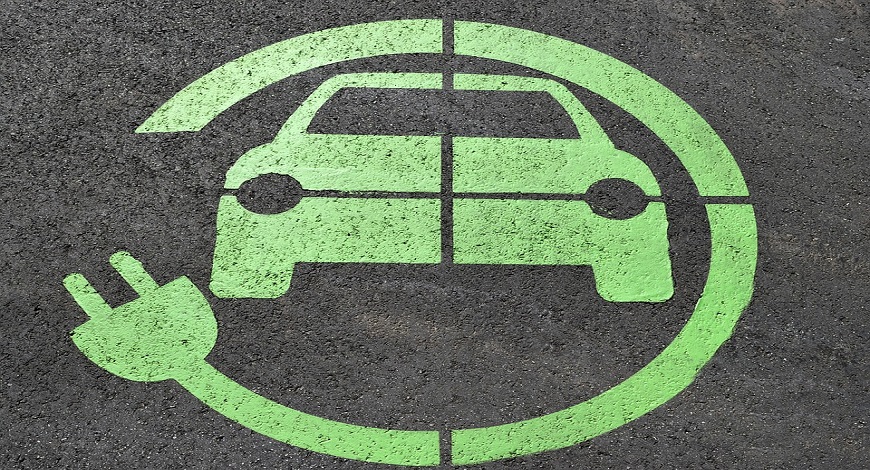
Lithium batteries, typically unobserved and behind the scenes in the field of sports, are proliferating in virtually every field that utilizes any kind of electronics. From powering electric motorsports to revolutionizing traditional sports infrastructure, lithium battery innovation in sports gear has far-reaching yet subtle implications for how humanity enjoys recreation and sports.
Previously, we discussed how Lithium batteries are making workplaces green and transforming the field of healthcare by facilitating resilient infrastructure and maximizing the accessibility of medical procedures and diagnostics devices. In a similar light, this deep-dive article aims to overview the advances enabled by Lithium ion batteries in the field of sports.
Lithium battery technology has taken on multifaceted roles in motorsports, stadium sports, and sports infrastructure, and this edition of the LOHUM Green Gazette will uncover the nuanced ways Lithium ion battery technology shaping the future of sustainable sports.
Explore Types of Batteries in Electric Vehicles
The inherent advantages of lithium batteries have led them to experience a remarkable 97% decrease in prices since 1991. This affordability, coupled with higher energy density, longer lifespan, faster charging, and reduced environmental impact, positions lithium-ion batteries as a versatile and eco-friendly choice across various applications.
Across all sports, an increasing number of wearable sensors and equipment powered by lithium-ion batteries are collecting real-time data on athlete, gear, and equipment performance, allowing for data-driven training, optimization, and injury prevention. Lithium battery innovation in sports can benefit athletes by providing them with access to cutting-edge training methods that were previously unavailable.
Transitioning to the realm of stadium sports, lithium batteries play a pivotal role in enhancing the fan experience and contributing to overall sustainability efforts.
FIFA’s exploration of semi-automated offside technology, relying on lithium battery-powered tracking cameras, represents a paradigm shift in refereeing accuracy during major tournaments.
Cricket stadiums worldwide are adopting lithium-powered solutions for sustainable energy practices, showcasing a commitment to renewable energy and environmental stewardship.
Lithium battery innovation for sports is now enabling advanced real-time shot tracking setups during NBA games, providing valuable data for players and coaches.
While not directly influencing gameplay, lithium batteries power stadium lighting and maintenance equipment in baseball. This subtle integration aligns with the broader trend of making sports venues more environmentally friendly. In 2019, the MLB introduced a wireless communication system between catchers and pitchers, which used lithium batteries to transmit signals.
In 2018, the Super Bowl used lithium batteries to power the LED lighting system, which significantly reduced the energy consumption and CO2e generation of the event. Reportedly, the venue utilized a large Lithium ion battery array to power the LED lights.
Electric bikes have revolutionized cycling, making long distances and steep hills the subject of MTB sport and accessible to even casual riders. Lithium-ion batteries provide the range and power for assisted pedaling, expanding the sport’s audience and promoting active lifestyles.
Electric snowmobiles and snowboards are gaining traction, offering quieter, cleaner fun without sacrificing the adrenaline rush.
The impact of Lithium battery technology in motorsports is evident, as lithium batteries continue to reliably power the transition to electric vehicles (EVs). From electric motorcycles making waves in the FIM MotoE World Cup to the high-speed excitement of Formula E racing, these milestones underscore the increasing prominence of EVs in the racing world.
The TTXGP, launched in 2009, was the first electric motorcycle racing series, which later merged with the e-Power to form the eRoadRacing World Cup in 2012. The FIM Enel MotoE World Championship, first announced in 2014, is the latest and most prestigious electric motorcycle racing series that showcases the potential of electric motorcycles on the same tracks as MotoGP, the premier class of motorcycle racing.
Since its inception in 2014, Formula E has been a testament to the potential of EVs in high-performance motorsports. Due to the proof-of-concept of performance demonstrated by Formula E, major automakers began channeling resources into electric vehicle development to build vehicles that are clean but still deliver thrills on tap.
The versatility of lithium batteries extends beyond conventional motorsports into e-kayaks, electric boats, planes, and even snowmobiles. This showcases the lithium batteries’ capability to power diverse sustainable sporting adventures.
We’ve covered how Lithium battery technology is transforming healthcare, and in a similar vein, Lithium battery innovation for sports includes significant game-changing applications for paralympics, or sports for the differently abled. Various sports technologies are being developed to assist athletes with disabilities in participating in sports like cycling and running.
Athletes who were once differently-abled or sustained career-ending injuries are now scaling new heights, effectively overcoming their limitations, and achieving their full potential thanks to devices that can carry their ambition and momentum.
The impact of lithium batteries transcends individual sports, influencing the way the entire sports ecosystem operates on a global scale. Prominent sports stadiums, tracks, and other sports venues across the globe are incorporating lithium battery innovation for sports to maximize sustainability and increase utilities.
Looking ahead, the integration of lithium batteries into sports infrastructure is poised for exponential growth, promising smarter stadiums, increased adoption of renewable energy, and global collaboration for sustainable sports practices.
As technology continues to advance, smarter stadiums powered by renewable energy and lithium battery storage are anticipated. Intelligent energy management systems will optimize energy consumption based on demand and available resources, ensuring a reliable and sustainable power supply for modern sports arenas.
The adoption of innovative renewable energy solutions, including advanced solar panel technologies, wind turbines, and experimental technologies like piezoelectric flooring, will become more widespread. Lithium batteries will serve as the backbone of these systems, storing excess energy and ensuring efficient power distribution.
The future of lithium batteries in sports infrastructure involves global collaboration. Countries hosting international tournaments will share best practices, implementing sustainable solutions that contribute to a broader global movement toward environmentally responsible sports.
While lithium battery innovation offers immense potential for developing nations, some challenges need to be addressed:
Lithium battery innovation in sports gear and infrastructure goes well beyond individual gadgets or specific sports. From motorsports, paralympics, and olympics to specific sports like cricket, lithium batteries are reshaping the way sports are played, watched, and experienced.
The global adoption of lithium battery innovation in sports demonstrates rising commitment to environmental responsibility and clean energy. Stadiums powered by solar panels, wind turbines, and innovative energy storage solutions showcase a future where sports and sustainability go hand in hand.
Lithium batteries are at the forefront of a cleaner, greener, and more exciting future for sports, and these power sources are about to become even cheaper and perform better than ever thanks to high-purity recycled energy transition materials extracted from end-of-life battery recycling.
Tune in to the LOHUM blog and our LinkedIn page for more insights on battery energy, sustainability, energy transition, circular economy, battery reuse, 2nd life applications, Lithium-ion battery recycling, and more!
Related blogs
This entrepreneur wants India to make its own lithium-ion cells for electric vehicle batteries

Forbes India
Rajat Verma already recovers raw materials from used cells at his venture, LOHUM Cleantech. He wants to close the loop by making cells in India as well.
India needs integrated recycling and repurposing battery business model: Rajat Verma of LOHUM Cleantech

YOURSTORY
In an interaction with AutoStory, Rajat Verma, Founder and CEO of LOHUM Cleantech, speaks about building his company, and about battery manufacturing and repurposing as an industry.
Sourcing Raw Materials Is A Big Challenge In Li-ion Battery Space: Founder Lohum

Business World Disrupt
Recognized as ‘The Most Innovative Company of the year 2022’ by The Confederation of Indian Industry (CII), LOHUM is a producer of sustainable Li-ion battery raw materials
1800 572 8822
Email : enquiry@lohum.com
G98, Site, 5, Kasna, Block A, Surajpur Site V, Greater Noida, Uttar Pradesh 201306
LOHUM Cleantech Private Limited, Plot No. D-7 & 8, Site 5th, Kasna Industrial Area, Greater Noida, Gautam Budh Nagar, Uttar Pradesh – 201308
LOHUM Cleantech Private Limited, Plot No. O-17, Site 5th, Kasna Industrial Area, Greater Noida, Gautam Budh Nagar, Uttar Pradesh – 201308